In the rather fanciful position below, white is to move and force checkmate in six moves:

This problem was composed by H. Lepuschutz in 1936. It is a representative of what problem composers refer to as a “logical problem.” In a logical problem, white has some sequence of moves that seems to achieve his goal very quickly. This is called his “main plan.” Sadly, black has an adequate defense to the threat. So white executes a “foreplan,” the sole purpose of which is to neutralize the defense. Then white gets back to business and executes his main plan.
Please recall that vertical files are labeled a-h from left to right, while horizontal ranks are labeled 1-8 from bottom to top. So the white king is on a6, and the black king is on c5, for example. Also remember that white is moving up the board and black is moving down. So black's pawn on b2 can promote on the next move.
This week's problem is an especially intricate version of the basic logical problem scheme. White must implement several foreplans to achieve his goal. His main plan is to play 1. Rb6, which threatens 2. Rxb5 mate. It is a powerful threat, but black can defend by promoting his pawn with 1. ... b1Q, resulting in this position:
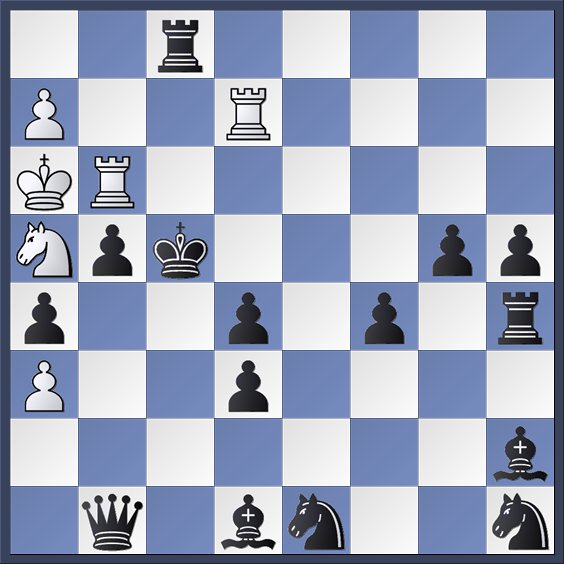
To be successful, white must neutralize this defense. Perhaps there is a way to do that. If white starts with 1. Rhd6, he will be threatening to play 2. Rd5 mate. White is hoping that black will defend with 1. ... Bb3:
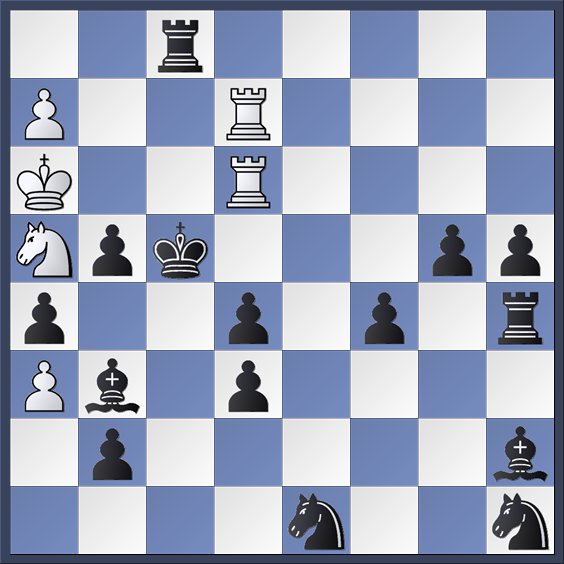
This blocks the b-file. Now white can execute his main plan with 2. Rb6, when black can no longer defend with 2. ... b1Q since the bishop is in the way. (Nor can black defend with 2. ... Bc4, since white could then reply with 3. Nb7 mate.)
Sadly, black has another defense. He can move his bishop in the other direction and play 1. ... Bf3! to defend, and this leaves white without an adequate continuation.
So, it seems that white must first neutralize this defense as well. To that end, he could try 1. Re6, which threatens 2. Re5 mate. Now we must analyze a bit. The defense with 1. ... Bf3:
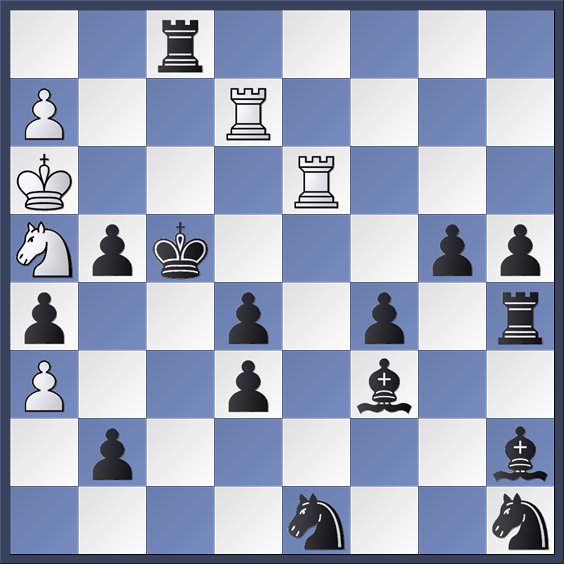
does not work. White will continue with 2. Re5+ Bd5 3. Rexd5 mate:
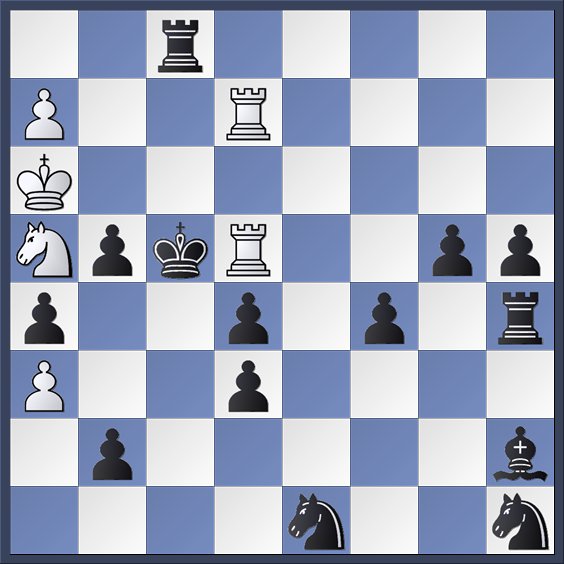
So let's back up and try something else. Black could defend with 1. ... Nf3 instead:
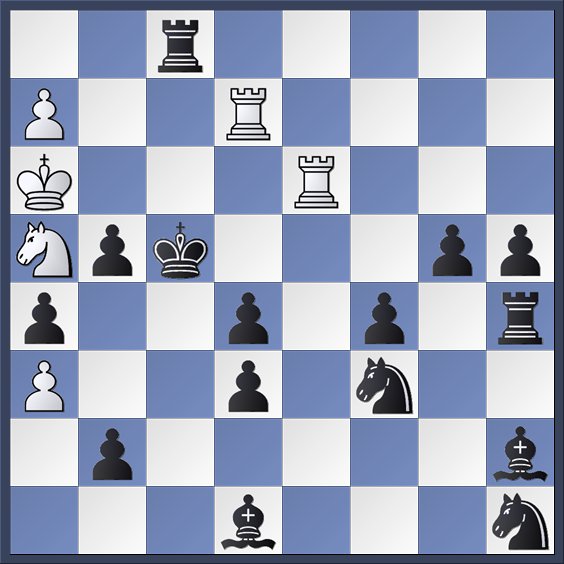
But this is exactly what white wants! Now that f3 is blocked, the black bishop cannot move there in response to white's Rd6 move. That would force black to play Bb3, blocking the b-file. But we have already seen that white could then execute his main plan with Rb6.
Alas, black still has a defense. He can play 1. ... f3:
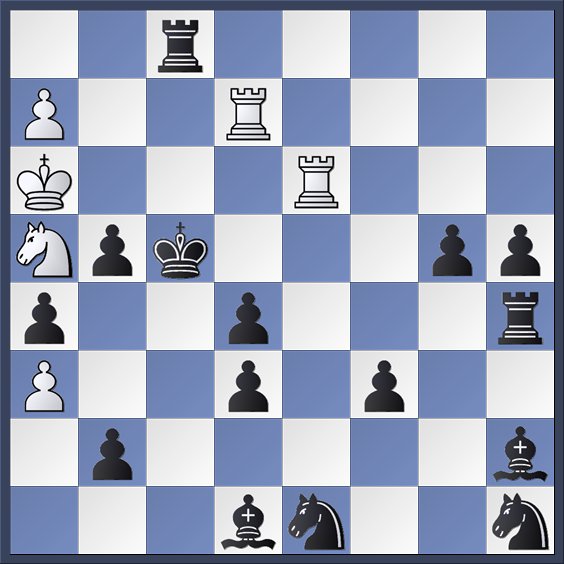
which defends by opening a line for the black bishop on h2. Since this bishop will also defend against white's Rd6 idea, white is stuck. Once again, we must find a way of neutralizing this defense.
Perhaps there's a way! White can start with 1. Rf6, threatening 2. Rf5 mate on the next move. Black moves to the f3 square will only delay mate by a little bit. A more promising defense is 1. ... Ng3:
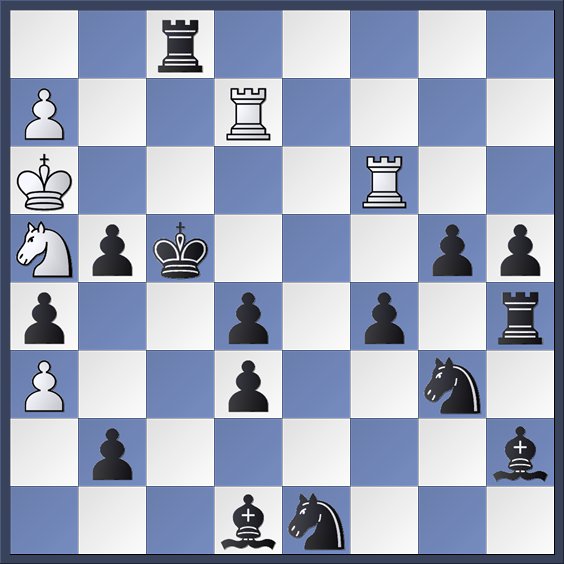
except that this plays right into white's hands. Now that the bishop on h2 is blocked, black will be force to meet white's Re6 move with Nf3. That will force him to play Bb3 in response to white's Rhd6. And that will leave him defenseless against Rb6, since promoting to a queen is no longer an adequate defense.
Does black have any other defenses? Yes, he does. He can play 1. ... Bg4:
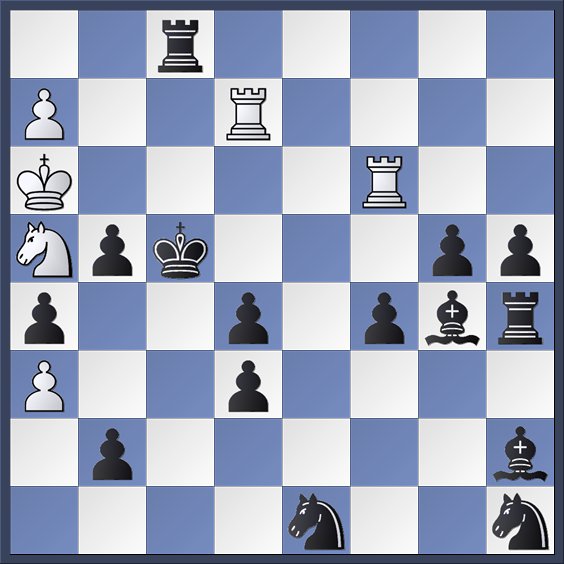
and once again white is in the soup. It seems we have another defense we must neutralize.
You might imagine that white is getting pretty frustrated at this point. But he does have one more trick up his sleeve! He can start with 1. Rg6, which threatens 2. Rxg5 mate. Black's only effective defense to this is 1. ... Rg4. But this takes the g4 square away from the black bishop, which is exactly what white wanted.
So watch how the dominoes fall. White starts with Rg6, which forces black to play Rg4. Now Bg4 is no longer an option, which means that black has to play Ng3 in response to Rf6 from white. But now pawn to f3 is no longer a viable defense, meaning black will have to meet Re6 with Nf3. But now Bf3 is no longer a viable defense for black, meaning that he will have to meet Rd6 with Bb3. This leaves black without a defense to Rb6, since the b-file is now blocked.
So here's the solution, starting from the position in the first diagram. 1. Rg6! Rg4 2. Rf6:
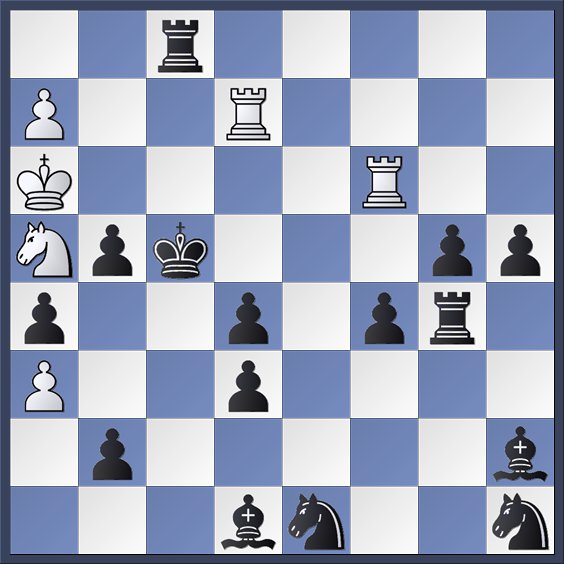
2. ... Ng3 3. Re6 Nf3:

4. Rd6 Bb3 5. Rb6
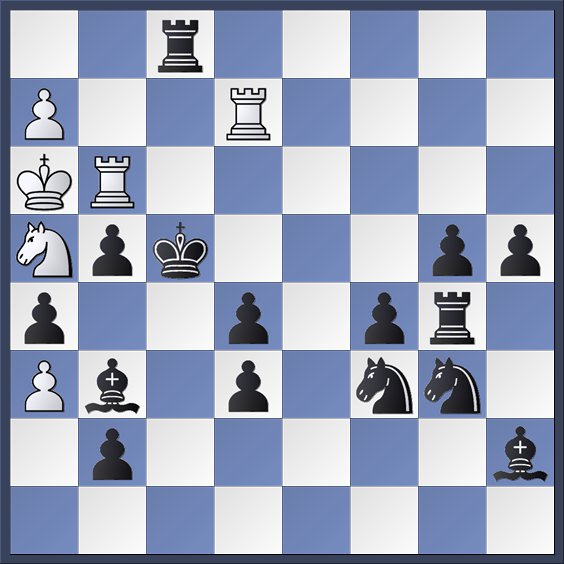
and now black is out of tricks, and he will be checkmated on the next move. Clever stuff! How do you even begin to compose such a thing?

Another nice problem and explanation.
Nice puzzle and analysis; thanks!
(By the way, I hate to criticize writing, but the gender-exclusive pronouns in these write-ups strike me as archaic in the 21st century. I tell my students that the exclusive generic "he" is no longer acceptable, though it was of course required when we were younger. Perhaps we could work to make chess a bit more welcoming, gender-wise?)
Hi Jason,
Wonderful analysis - crystal clear. Of course I would expect as much from a math Ph.D. :-)
Did you see the Chess Championship? I was disappointed that Anand seemed to collapse in Game 9.
Keep your excellent posts coming...
Kindest regards,
Ken
Okay, so I looked at this for a while and wonder why Pa8 doesn't permit mate on the next move.
RxQ doesn't work because then Rc6 is mate. Seems like Bf3 stalls it for one additional move. (QxR!, Bc6 then QorRxB mate)
Moving any other black piece seems to have no effect. Am I missing something?
Jr--
Glad you liked the problem!
Physicalist--
Alas, English lacks a gender-neutral, third person singular pronoun that reasonably applies to people (so “it” doesn't count). When I write about what white is thinking or black is thinking, I tend to think of it as writing from the perspective of the white king or the black king, which is why it feels natural me to use the masculine pronoun.
Ken--
I did a couple of posts about the World Chess Championship. In this post I summarized the match and looked at the last few games.
Divalent--
I think you have missed something. If white promotes on the first move, and then black plays RxQ, white will actually be in check. So white won't have time to give mate with Rc6, since he needs to get out of check first. And that will give black enough time to foil all of white's plans.
Doh! I knew I had to be missing something. :-)
" English lacks a gender-neutral, third person singular pronoun"
Yeah, I hate English too.
One option you might want to consider is adopting some arbitrary but consistent personification of the two sides.
In information theory, we always talk about "Alice" and "Bob". In philosophy of causation, all examples use "Suzy" and "Billy."
Maybe something like "Wendy White" and "Bob Black" would serve.
Great problem, Jason. I'd never heard the term "logical problem" before, but this tiny-stepping Rook stroll certainly looks like a fine example of it.
Fun stuff -- keep 'em coming, please?
Hi Bill. Glad you like the problem! Rest assured that I have the next few Sundays already covered.
Will you be stopping by Parsippany this year? I will be missing the Saturday of the tournament, but I will be there on Sunday and Monday.
Not 100 per cent sure about Parsippany just yet but 80 per cent likely at least the Sunday.